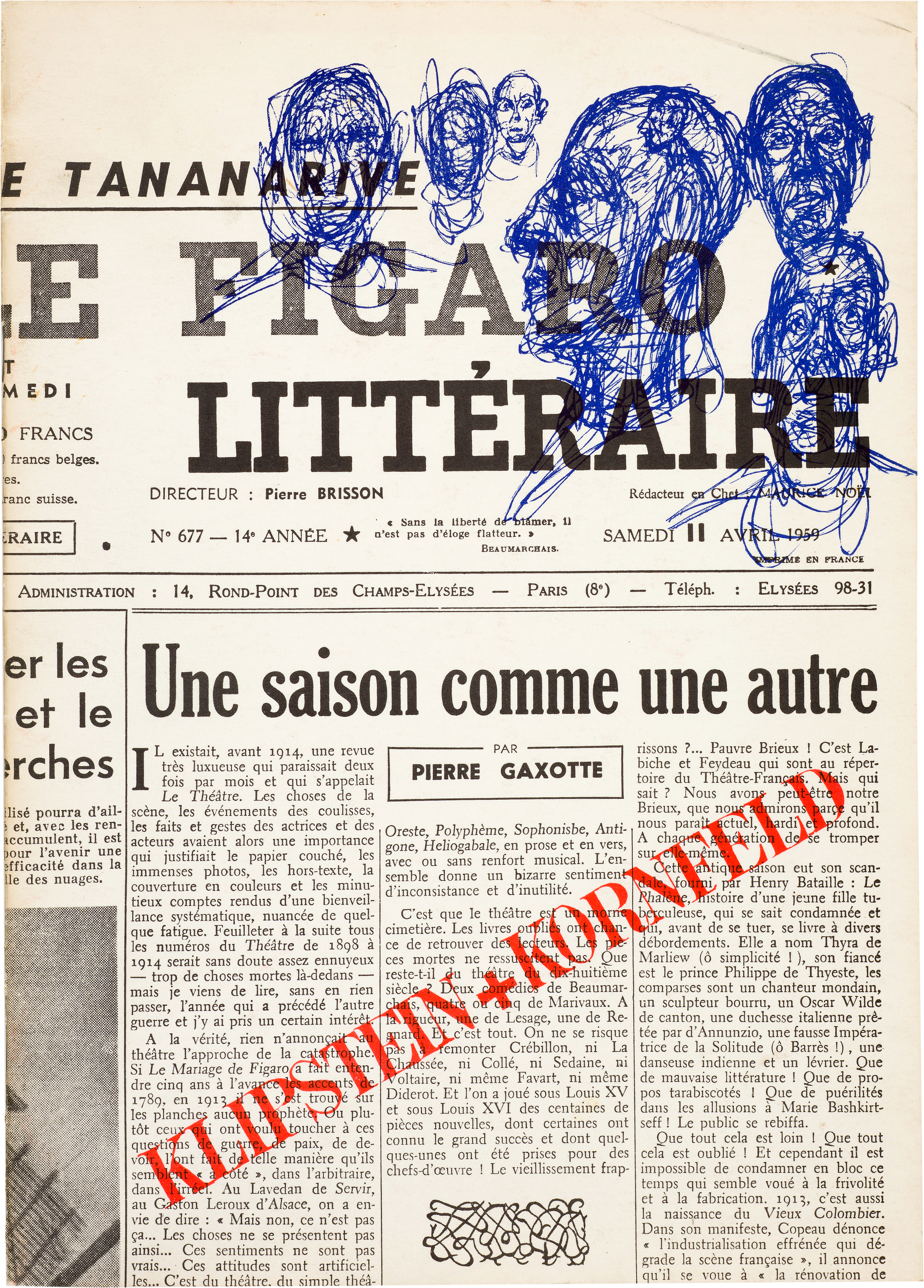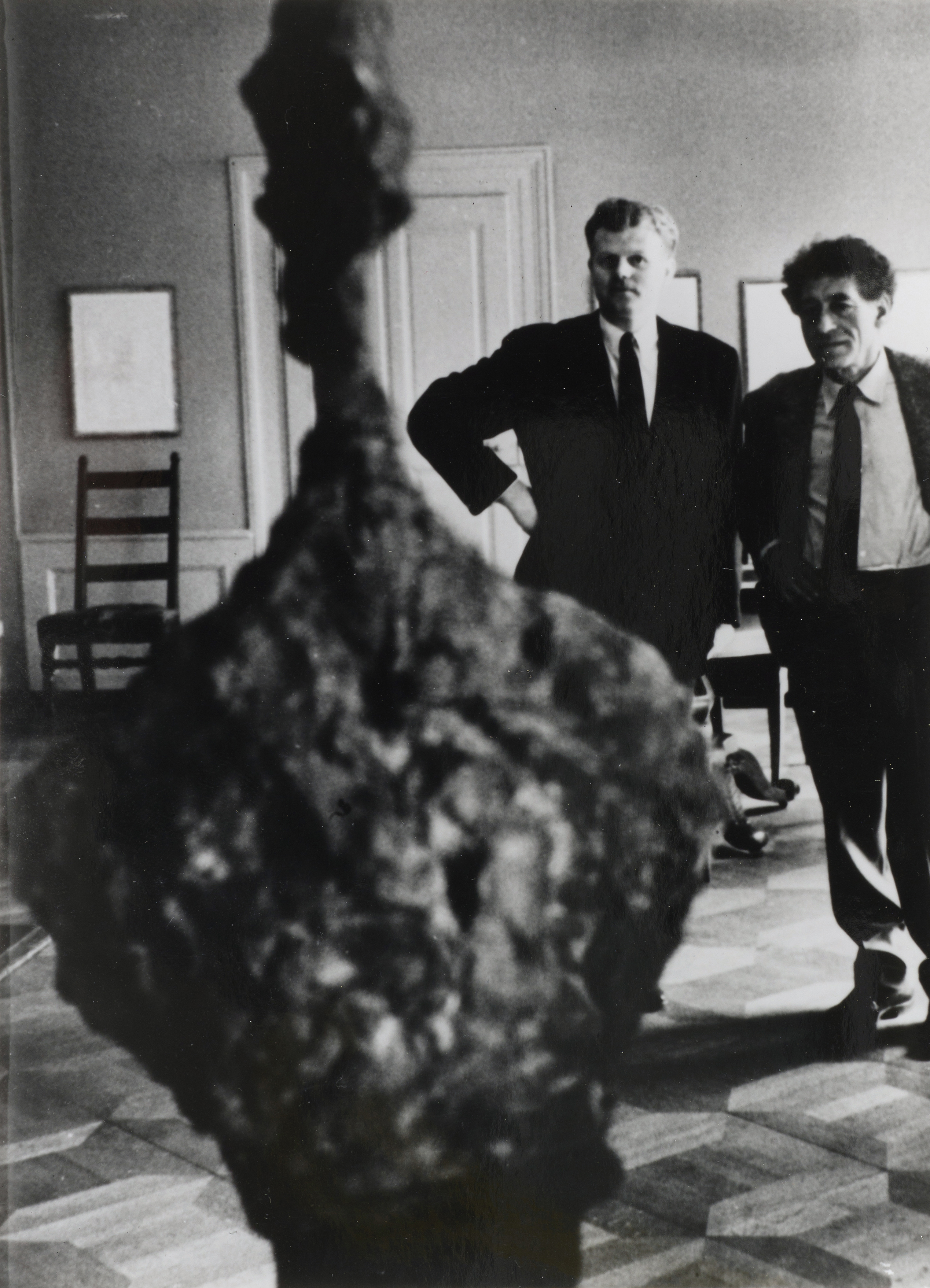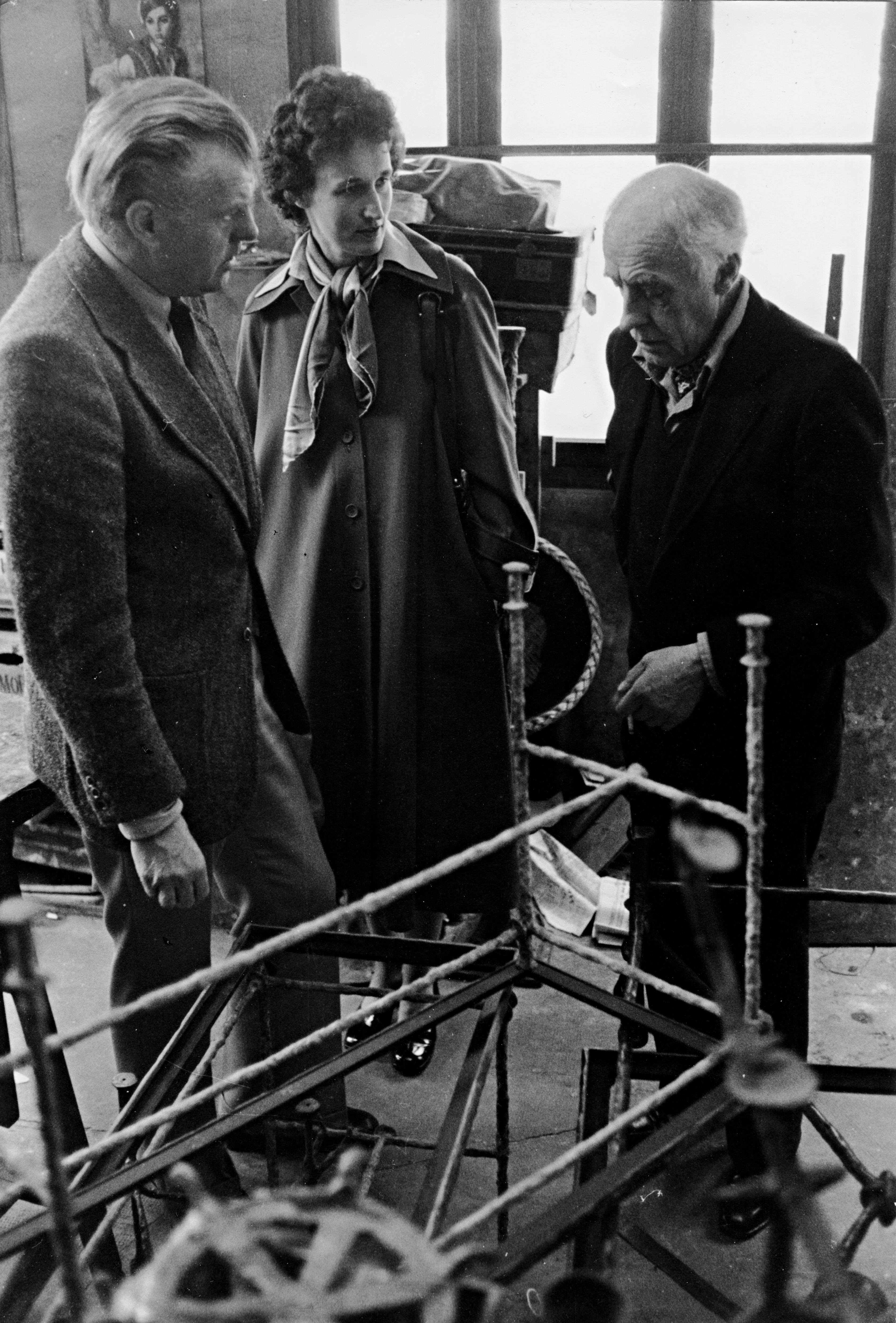- FR
S’inscrire
- Acheter
- Vendre
- Plus
- Galerie
- Commerce d'art
- Maison d'Édition
- Kornfeld aujourd’hui
- L'histoire de la Maison
- Informations

Alberto and Diego Giacometti in the Eberhard W. Kornfeld Collection
Apart from his close friendships with Sam Francis and Jean Tinguely, Eberhard W. Kornfeld maintained long-standing relationships especially with Alberto and, later, Diego Giacometti.
After years of active military service, Kornfeld joined art dealer Dr August Klipstein in Bern, first as a trainee and later as a ‘mini partner’, as he jokingly referred to it. There he mainly focused on Old Master prints and Modernist printmaking. Imagine how he felt when he first visited the Kunsthalle Bern, where art historian Arnold Rüdlinger was curating an ambitious programme showcasing the latest contemporary art from Paris and the USA. Born in 1919, Rüdlinger was only four years older than Kornfeld. He soon became an important companion and was instrumental in establishing contacts between Kornfeld and the contemporary artists with whom he was unfamiliar. Rüdlinger also acquainted Kornfeld with Sam Francis and the American art scene while they were travelling in the USA.
It was at the Kunsthalle Bern in 1948 that Kornfeld first met and got to know the sculptor and painter Alberto Giacometti, who hailed from the Bregaglia Valley and was a good 20 years his senior. Rüdlinger was organising the important exhibition ‘Sculpteurs contemporains de l’École de Paris’, with one room dedicated to works by the Swiss artist who had moved to Paris after the war. Kornfeld remembered this first encounter well: ‘I entered the Kunsthalle while they were setting up the exhibition. I walked into the room earmarked for Giacometti and met the artist, accompanied by his mother, Giovanni Giacometti’s widow. She had come directly from the mountain farming village Stampa. It was impressive how Annetta Giacometti, experienced in art matters for decades, gave her son, who was then already 47 years old, instructions as to where to place his sculptures, which he mostly obeyed.’ (in: Wege der Moderne, Aus der Sammlung Eberhard W. Kornfeld, Vienna 2008, p. 237).

During their first meeting, they agreed that Kornfeld would visit the artist in his studio at 46 Rue Hippolyte-Maindron the next time he was in Paris. As Kornfeld was often in Paris, these get-togethers, in combination with a late evening meal at ‘La Coupole’, became a delightful regular event. Occasionally, Kornfeld would also drop by when Giacometti was on holiday in Stampa or Maloja. It was in this very location that Kornfeld took the well-known photographs of Annetta and Alberto in front of the family home. By the 1950s, Giacometti was a renowned artist and was represented by Pierre Matisse in New York and Aimé Maeght in Paris. Kornfeld had the privilege to buy directly in the studio, although restricted to drawings and prints. Over the years, the relationship intensified, and when Rüdlinger’s successor at the Kunsthalle Bern, Franz Meyer, organised a solo exhibition for the sculptor in 1956, plans were made to hold an exhibition at Klipstein & Kornfeld. However, the plan was not realised until 1959. In keeping with the custom of the time, Kornfeld bought the works with the intention of selling them to collectors during the exhibition. Giacometti sold three plaster sculptures to Kornfeld, along with the rights to cast them in bronze (cf. lots 18, 28 and 30 in this catalogue). Additionally, the large bronze ‘Stele III’ was purchased from Maeght, resulting in a beautiful collection of sculptures, drawings and prints. The exhibition was only a moderate success and numerous pieces remained unsold, eventually entering Kornfeld’s private collection.
Nevertheless, contact with Alberto remained intensive and friendly. On several occasions, they also travelled to Oschwand to visit Alberto’s godfather, the well-known Swiss artist Cuno Amiet. During one of those visits Amiet reportedly said that he had never conceived his godson would become a great artist. The five pencil drawings that Alberto made of Kornfeld in 1959 are an expression of their intimate friendship. Four of them came into Kornfeld’s collection, while the artist kept one. Kornfeld would also have loved an oil portrait, but Alberto kept saying that the time was not right. In 1963, Kornfeld took his catalogue raisonné of Paul Klee’s prints, which had just been published, with him to Paris. Fascinated, Alberto leafed through it and enquired if he could compile a similar catalogue for him. Kornfeld agreed spontaneously. However, due to the fact that there was no or only limited access to important sources for many years, it was not until 2017 that this extensive work was published in collaboration with the Alberto et Annette Giacometti Foundation, Paris. Since then, ‘Kornfeld numbers’ have been used to catalogue Alberto’s prints – a gesture of solidarity that has lasted far beyond the death of the two friends.

Kornfeld became acquainted with Diego, Alberto’s brother and closest confidante, in Alberto’s studio at an early stage. It must have been around 1954 when Alberto asked Kornfeld if he could perhaps commission Diego with a piece of furniture, as he had very little to do at the moment. Diego had lived in Paris with his brother since 1925. First, he worked as his studio assistant and was, since he was always available, his most important model. Later he became responsible for the casting and patination of Alberto’s bronzes. In 1929, Man Ray introduced Alberto to the Parisian interior designer Jean-Michel Frank, who encouraged him to create commercial artworks in bronze. Among other things, this resulted in his famous lamps (see lots 4, 10-12) and jewellery for Elsa Schiaparelli. The pieces were always created in Alberto’s minimalist design, but Diego was responsible for their technical realisation. Thanks to his profound understanding, Diego also played a key role in the formulation of the works. Later, Alberto authorised his brother to produce the commercial pieces he had designed under his own direction. During World War II, Alberto went into exile in Geneva, where he met in 1943 his future wife, Annette Arm.
Diego remained in Paris for the entire time, ‘guarding’ the studio and quietly developing his own ornamental iconography of vegetative and zoomorphic forms. As well as working on commissions for Alberto, he designed his own furniture. The first major commissions followed, for example in 1964 for the ‘Café Diego’ at the Fondation Maeght in Saint-Paul-de-Vence and in 1965 for the bar in the Kronenhalle in Zurich. Until the 1960s, Diego’s furniture designs were unique pieces or adapted versions. It was only after Alberto’s death in 1966 that Diego fully emancipate himself and began to realise his ideas more freely. Further substantial orders followed, the most famous of them were probably the furnishing of Empress Farah Diba’s palace in Tehran and the furnishing of Musée Picasso in Paris. Diego became one of the favourite interior designers among high society, and his furniture pieces adorned the homes of many of the era’s leading collectors. The studio at 46 Rue Hippolyte-Maindron soon became too small. Diego therefore moved into a house on Rue du Moulin Vert, where he lived and worked until his death in 1985. Eberhard Kornfeld often stopped by, had dinner at Diego’s favourite restaurant, ‘Clos du Moulin’, and continued to purchase items for his residence in Bern’s old town, his holiday home in Randogne and finally for the ‘Rothaus’ near Bolligen. We would like to extend our heartfelt thanks to the Kornfeld family for placing their trust in our company, which ‘Ebi’ managed and characterised for 70 years.